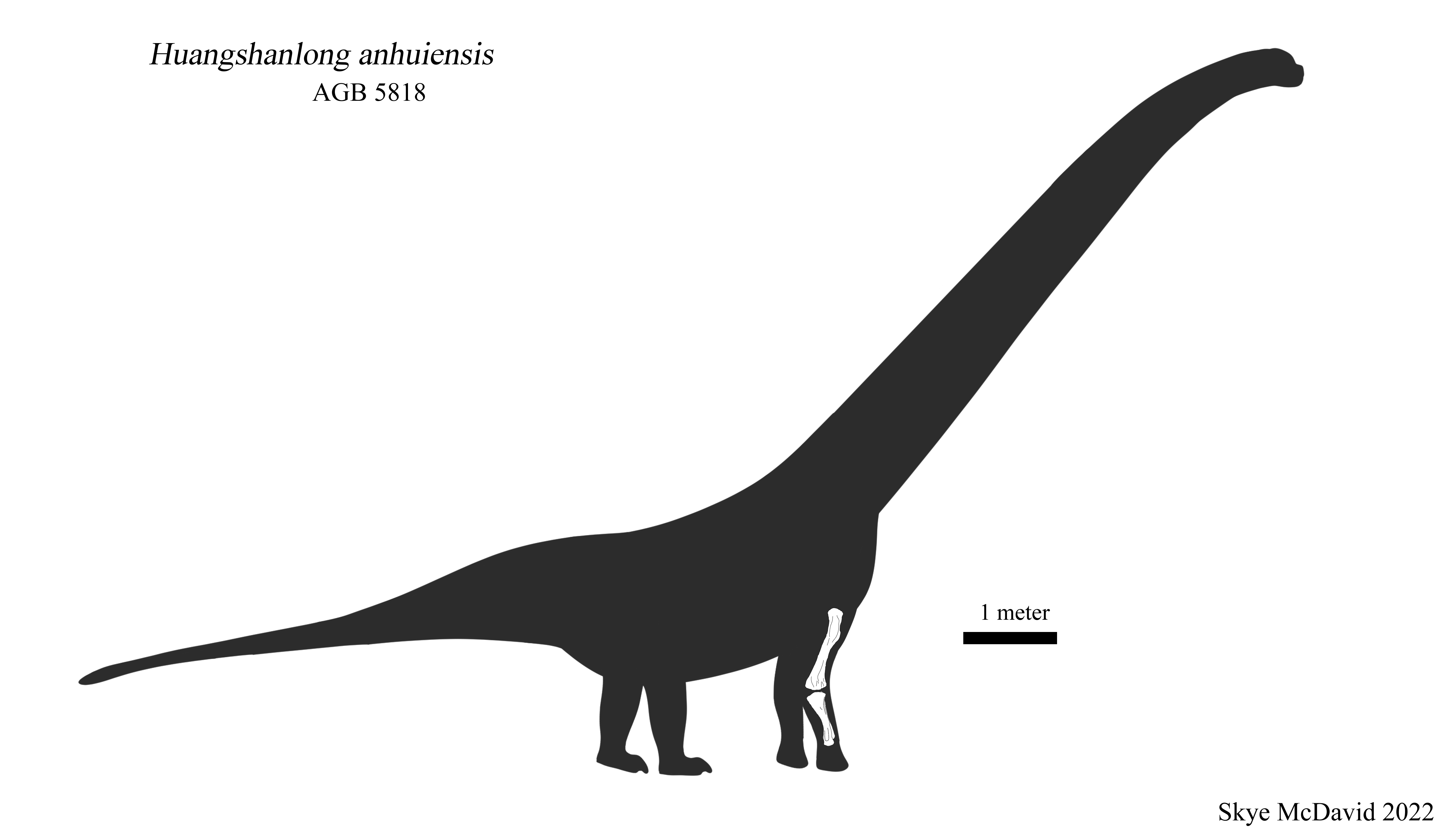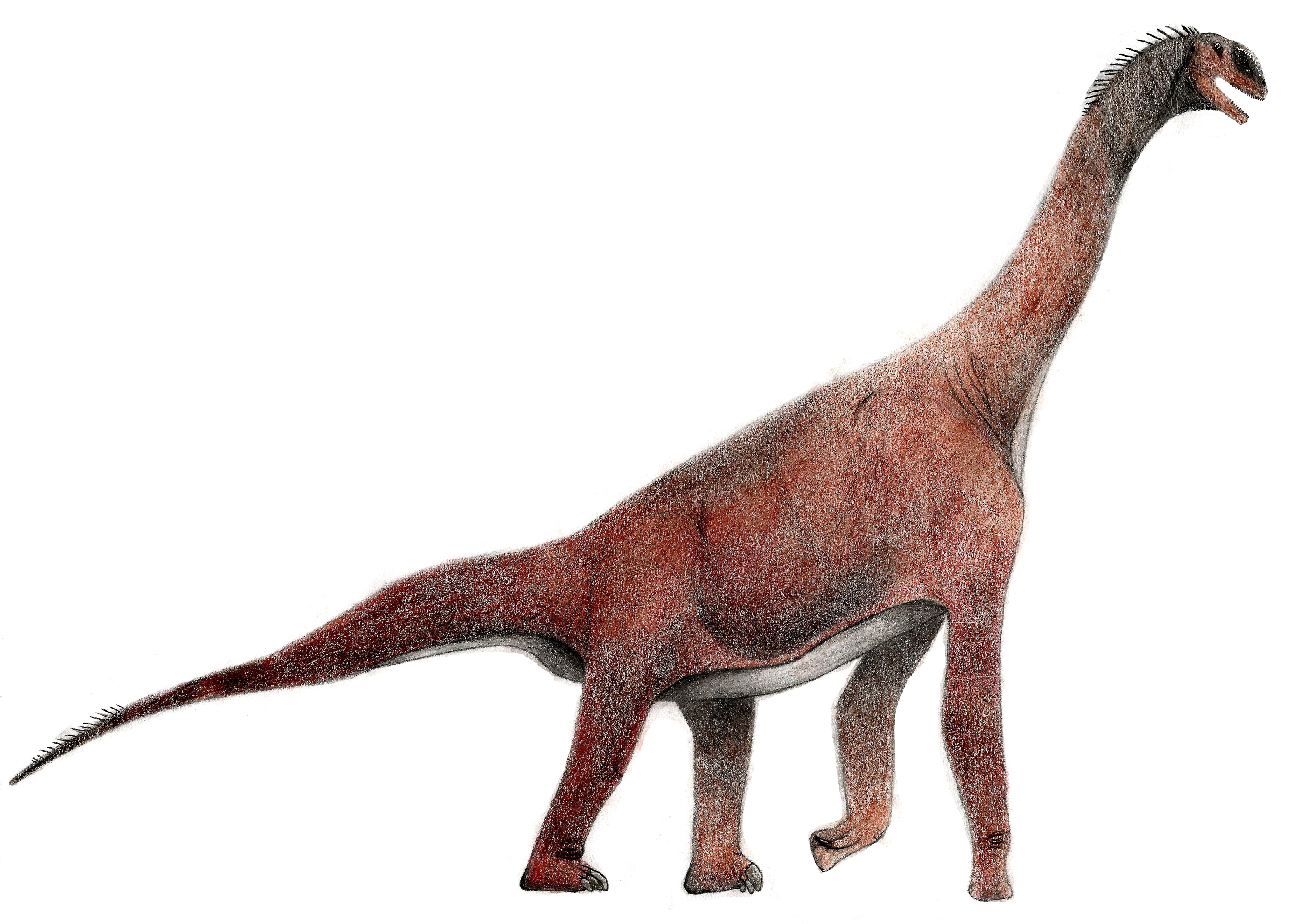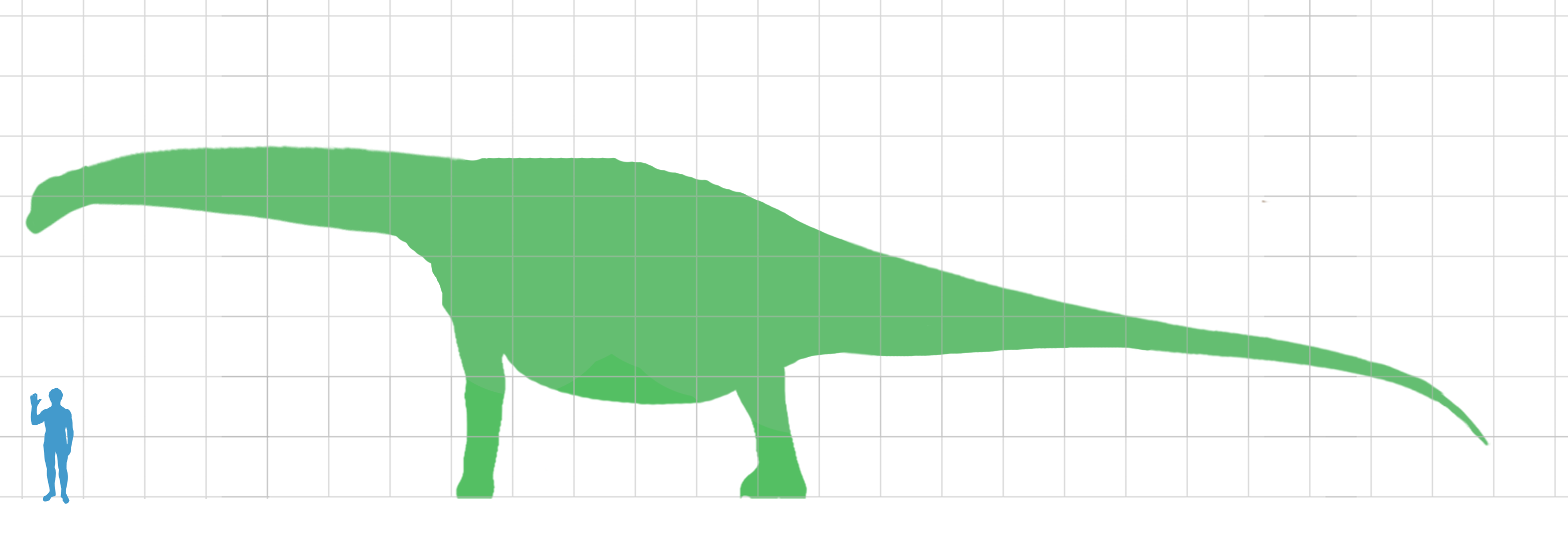|
Anhuilong
''Anhuilong'' (meaning "Anhui dragon") is a genus of mamenchisaurid dinosaur known from the Hongqin Formation of Anhui province, China. The genus contains a single species, ''Anhuilong diboensis''. Discovery and naming ''Anhuilong'' is known from the holotype AGB 5822, a forelimb consisting of a left humerus, ulna, and radius. It is distinguished by the following combination of features: low ratios of the average of the greatest widths of the proximal end, mid-shaft and distal end of the humerus/length of the humerus, total length of ulna to humerus and total length of radius to humerus; the lateral edge of the deltopectoral crest directs caudolaterally, the lateral accessory condyle on the craniodistal edge of humerus is more robust than the medial one, and the cross-sectional shape of the ulna at mid-shaft is elliptical with highest ratio of transverse to craniocaudal diameter among mamenchisaurids. Phylogeny Ren ''et al.'' (2020) recovered ''Anhuilong'' as the sister taxon o ... [...More Info...] [...Related Items...] OR: [Wikipedia] [Google] [Baidu] |
Huangshanlong
''Huangshanlong'' (meaning "Huangshan dragon") is a genus of mamenchisaurid dinosaurs native to the Anhui province of China. It contains a single species, ''Huangshanlong anhuiensis''. ''H. anhuiensis'' represents, along with '' Anhuilong'' and ''Wannanosaurus'', one of three dinosaurs fround in Anhui province. Discovery and description The only specimen consists of a partial forelimb discovered in 2002 during the construction of the Huihang highway. It can be distinguished from other mamenchisaurids in having the following unique combination of features: such as transverse length of the proximal end of the humerus is 36% of the total length of the humerus, accessory processes are located near the middle of the cranial edge of the distal end of the humerus, length of the radius is 58% of that of the humerus, length of the ulna is two thirds of that of the humerus, craniomedial process on the proximal end of the ulna is longer than the craniolateral one, and ridges develop on ... [...More Info...] [...Related Items...] OR: [Wikipedia] [Google] [Baidu] |
Mamenchisauridae
Mamenchisauridae is a family of sauropod dinosaurs belonging to Eusauropoda known from the Jurassic and Early Cretaceous of Asia and Africa. Some members of the group reached gigantic sizes, amongst the largest of all sauropods. Classification The family Mamenchisauridae was first erected by Chinese paleontologists Yang Zhongjian ("C.C. Young") and Zhao Xijin in 1972, in a paper describing '' Mamenchisaurus hochuanensis''.Young, C.C. and Zhao, X. (1972). "''Mamenchisaurus hochuanensis sp. nov.''". ''Institute of Vertebrate Palaeontology and Palaeoanthropology Monographs'' Series A 8: 1-30. The most complete cladogram of Mamenchisauridae is presented by Moore ''et al.'', 2020, which includes several named species. Notably, some iterations of their analysis recover ''Euhelopus'' and kin, usually considered somphospondylians, as relatives of mamenchisaurids, mirroring earlier conceptions about the family. Topology A: Implied-weights analysis, Gonzàlez Riga dataset Topology B: Ti ... [...More Info...] [...Related Items...] OR: [Wikipedia] [Google] [Baidu] |
Mamenchisaurids
Mamenchisauridae is a family of sauropod dinosaurs belonging to Eusauropoda known from the Jurassic and Early Cretaceous of Asia and Africa. Some members of the group reached gigantic sizes, amongst the largest of all sauropods. Classification The family Mamenchisauridae was first erected by Chinese paleontologists Yang Zhongjian ("C.C. Young") and Zhao Xijin in 1972, in a paper describing '' Mamenchisaurus hochuanensis''.Young, C.C. and Zhao, X. (1972). "''Mamenchisaurus hochuanensis sp. nov.''". ''Institute of Vertebrate Palaeontology and Palaeoanthropology Monographs'' Series A 8: 1-30. The most complete cladogram of Mamenchisauridae is presented by Moore ''et al.'', 2020, which includes several named species. Notably, some iterations of their analysis recover ''Euhelopus'' and kin, usually considered somphospondylians, as relatives of mamenchisaurids, mirroring earlier conceptions about the family. Topology A: Implied-weights analysis, Gonzàlez Riga dataset Topology B: Ti ... [...More Info...] [...Related Items...] OR: [Wikipedia] [Google] [Baidu] |
2020 In Archosaur Paleontology
This article records new taxa of fossil archosaurs of every kind that are scheduled described during the year 2020, as well as other significant discoveries and events related to paleontology of archosaurs that are scheduled to occur in the year 2020. General research * A study aiming to determine how mass properties and body proportions relate to each other and locomotor posture in archosaurs is published online by Bishop ''et al.'' (2020). * A study on the brain growth in the American alligator and in the common ostrich throughout their ontogeny is published by Hu ''et al.'' (2020), who evaluate the implications of their findings for the knowledge of the development of the brain in non-avian dinosaurs. * A study on the evolution of metabolic rates along the bird stem lineage is published by Rezende ''et al.'' (2020). * A review of the anatomy of the respiratory systems and mechanics of breathing in living and fossil archosaurs, evaluating their physiological implications, is pu ... [...More Info...] [...Related Items...] OR: [Wikipedia] [Google] [Baidu] |
Middle Jurassic
The Middle Jurassic is the second epoch of the Jurassic Period. It lasted from about 174.1 to 163.5 million years ago. Fossils of land-dwelling animals, such as dinosaurs, from the Middle Jurassic are relatively rare, but geological formations containing land animal fossils include the Forest Marble Formation in England, the Kilmaluag Formation in Scotland,British Geological Survey. 2011Stratigraphic framework for the Middle Jurassic strata of Great Britain and the adjoining continental shelf: research report RR/11/06 British Geological Survey, Keyworth, Nottingham. the Daohugou Beds in China, the Itat Formation in Russia, and the Isalo III Formation of western Madagascar. Paleogeography During the Middle Jurassic Epoch, Pangaea began to separate into Laurasia and Gondwana, and the Atlantic Ocean formed. Eastern Laurasia was tectonically active as the Cimmerian plate continued to collide with Laurasia's southern coast, completely closing the Paleo-Tethys Ocean. A subduction zone ... [...More Info...] [...Related Items...] OR: [Wikipedia] [Google] [Baidu] |
Mamenchisaurus
''Mamenchisaurus'' (or spelling pronunciation ) is a genus of sauropod dinosaur known for their remarkably long necks which made up nearly half the total body length. Numerous species have been assigned to the genus; however, many of these might be questionable. Fossils have been found in the Sichuan Basin and Yunnan Province in China. Several species are from the Upper Shaximiao Formation whose geologic age is uncertain. However, evidence suggests that this be no earlier than the Oxfordian stage of the Late Jurassic. ''M. sinocanadorum'' dates to the Oxfordian stage (158.7 to 161.2 mya) and ''M. anyuensis'' to the Aptian stage of the Early Cretaceous around 114.4 mya. Most species were medium- to large-size sauropods in length.Russell, D.A., Zheng, Z. (1993). "A large mamenchisaurid from the Junggar Basin, Xinjiang, People Republic of China." ''Canadian Journal of Earth Sciences'', (30): 2082-2095. Two as-yet-undescribed cervical vertebrae, which might belong to ''M. sinocanado ... [...More Info...] [...Related Items...] OR: [Wikipedia] [Google] [Baidu] |
Middle Jurassic Dinosaurs Of Asia
Middle or The Middle may refer to: * Centre (geometry), the point equally distant from the outer limits. Places * Middle (sheading), a subdivision of the Isle of Man * Middle Bay (other) * Middle Brook (other) * Middle Creek (other) * Middle Island (other) * Middle Lake (other) * Middle Mountain, California * Middle Peninsula, Chesapeake Bay, Virginia * Middle Range, a former name of the Xueshan Range on Taiwan Island * Middle River (other) * Middle Rocks, two rocks at the eastern opening of the Straits of Singapore * Middle Sound, a bay in North Carolina * Middle Township (other) * Middle East Music * "Middle" (song), 2015 * "The Middle" (Jimmy Eat World song), 2001 * "The Middle" (Zedd, Maren Morris and Grey song), 2018 *"Middle", a song by Rocket from the Crypt from their 1995 album ''Scream, Dracula, Scream!'' *"The Middle", a song by Demi Lovato from their debut album ''Don't Forget'' *"The Middle", a song by ... [...More Info...] [...Related Items...] OR: [Wikipedia] [Google] [Baidu] |
Haplocanthosaurus
''Haplocanthosaurus'' (meaning "simple spined lizard") is a genus of intermediate sauropod dinosaur. Two species, ''H. delfsi'' and ''H. priscus'', are known from incomplete fossil skeletons. It lived during the late Jurassic period (Kimmeridgian stage), 155 to 152 million years ago.Turner, C.E. and Peterson, F., (1999). "Biostratigraphy of dinosaurs in the Upper Jurassic Morrison Formation of the Western Interior, U.S.A." Pp. 77–114 in Gillette, D.D. (ed.), ''Vertebrate Paleontology in Utah''. Utah Geological Survey Miscellaneous Publication 99-1. The type species is ''H. priscus'', and the referred species ''H. delfsi'' was discovered by a young college student named Edwin Delfs in Colorado, United States. ''Haplocanthosaurus'' specimens have been found in the very lowest layer of the Morrison Formation, along with ''Hesperosaurus mjosi'', ''Brontosaurus yahnahpin'', and ''Allosaurus jimmadensi, Allosaurus jimmadseni''.Foster, J. (2007). ''Jurassic West: The Dinosaurs of the M ... [...More Info...] [...Related Items...] OR: [Wikipedia] [Google] [Baidu] |
Losillasaurus
''Losillasaurus'' (meaning " Losilla lizard") is a genus of sauropod dinosaur from the Late Jurassic and possibly Early Cretaceous (Kimmeridgian-?Berriasian) in the southeast of Spain. The type species of the turiasaurian ''Losillasaurus giganteus'' was discovered in the Villar del Arzobispo Formation in Valencia and formally described by Casanovas, Santafé and Sanz in 2001. The holotype material is from a subadult and includes part of a skull; complete cervical, dorsal, sacral, and caudal vertebrae as well as several fragments; skeletal elements from the limbs including a humerus, ulna, radius, and metacarpal; sternal plates; and from the pelvis: the ilium, ischium, and pubis. The genus is characterized by the dimension and shape of the neural spine of the proximal caudal vertebrae. The humerus is long, which despite being from a subadult specimen is within 20% of the size of ''Paralititan ''Paralititan'' (meaning "tidal giant") was a giant titanosaurian sauropod dinosaur g ... [...More Info...] [...Related Items...] OR: [Wikipedia] [Google] [Baidu] |
Atlasaurus
''Atlasaurus'' is a genus of sauropod dinosaurs from Middle Jurassic (Bathonian to Callovian stages) beds in North Africa.M. Monbaron, D. A. Russell, and P. Taquet. (1999). ''Atlasaurus imelakei'' n.g., n.sp., a brachiosaurid-like sauropod from the Middle Jurassic of Morocco. ''Comptes Rendus de l'Académie des Sciences à Paris, Sciences de la Terre et des Planètes'' 329:519-526. Description ''Atlasaurus'' differs from ''Brachiosaurus'' relative to the estimated length of the dorsal vertebral column (assuming 12 vertebrae, ), in having a proportionately larger skull, a shorter neck (with at least 13 cervical vertebrae, shorter and more uniform in length than ''Brachiosaurus''), a longer tail and more elongated limbs (humerus to femur ratio: 0.99; ulna to tibia ratio: 1.15). The teeth are spoon-shaped and have denticles. The lower jaw of ''Atlasaurus'' is about long, the neck was about long, the humerus long, and the femur about long. It has been estimated at in length, a ... [...More Info...] [...Related Items...] OR: [Wikipedia] [Google] [Baidu] |
Turiasaurus
''Turiasaurus'' (meaning " Turia lizard") is a genus of sauropod dinosaurs. It is known from a single fossil specimen representing the species ''Turiasaurus riodevensis'', found in the Kimmeridgian Villar del Arzobispo Formation of Teruel, Spain. Description ''Turiasaurus'' is believed to be the largest dinosaur ever found in Europe, and is among the largest dinosaurs known. It is estimated at in length and with a weight of .Royo-Torres, R., Cobos, A., and Alcalá, L. (2006). "A Giant European Dinosaur and a New Sauropod Clade." ''Science'' 314: 1925-1927.Paul, G.S., 2010, The Princeton Field Guide to Dinosaurs, Princeton University Press. The length of its skull is 70 centimetres, which is not too large. According to the paleontologist Luis Alcalá, this is because a larger head might have caused ''Turiasaurus'' to break its neck. Phylogenetic analysis shows that ''Turiasaurus'' lies outside of the Neosauropoda division and belongs to a new clade, Turiasauria, together wit ... [...More Info...] [...Related Items...] OR: [Wikipedia] [Google] [Baidu] |
Patagosaurus
''Patagosaurus'' (meaning "Patagonia lizard") is an extinct genus of eusauropod dinosaur from the Middle-Late Toarcian of Patagonia, Argentina. It was first found in deposits of the Cañadón Asfalto Formation, which date to around 179 to 177 million years ago. Although originally twelve specimens were assigned to the taxon, at least one of them may belong to a different genus. ''Patagosaurus'' probably lived alongside genera as ''Piatnitzkysaurus'', ''Condorraptor'' and ''Volkheimeria''. Since ''Patagosaurus'' is known from many specimens, including at least one juvenile, its anatomy and growth are fairly well understood. Both ages exhibit the typical features of a sauropod, a long neck, small head, a long tail and being quadrupedal. The juvenile exhibits features different from the adult in regions like the mandible, pectoral girdle, pelvis and hindlimb, although overall their anatomy is quite similar. The many known specimens help fill in gaps in the anatomy of the genus, ... [...More Info...] [...Related Items...] OR: [Wikipedia] [Google] [Baidu] |







